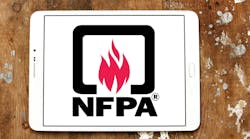You work for an electrical services firm that recently landed a new client. You are the crew leader on the first job for this client.
The job involves performing thermography and ultrasonic analysis inside switchgear and distribution panels throughout the plant. The maintenance manager has assigned an electrical helper, Paul, to escort your crew through the plant and to serve as your immediate contact for any needs or concerns you have.
When you held the job briefing, Paul didn't seem attentive and didn't ask questions. When you asked him if you needed to clarify anything, he said no.
When the job briefing concluded, you told Paul your crew needed to bring tools, test equipment, and PPE to the maintenance shop. Then once your crew was ready to start the work, you would begin at the closer of the two services Once it was done, you would get the other service and then start with any feeder panels and large motors. Paul agreed to map out the route so as to avoid unnecessary walking back and forth. So far, so good.
When Paul arrived at the maintenance shop to escort you to the first testing area, he wasn't wearing the PPE required for being inside the arc flash boundary. You asked him if he would be wearing any arc flash PPE, and he said he didn't need it. You took this as meaning he intended to stay outside the arc flash boundary.
Paul brought your crew to the first service entrance. A quick visual inspection of the area showed no safety issues, so you told Paul, “We want to remove some covers now.” Paul just stood there. “Paul, you can't be inside the arc flash boundary without the proper PPE. While you stand here, we can't proceed.”
But Paul refused to move. He said he wasn't actually doing the work, so he was safe. And he wasn't going to go somewhere else, because it was his job to keep an eye on you. He said this as if your crew might steal something.
So now you have a dilemma. Your client's escort is keeping you from doing the work, due to his lack of understanding of the safety situation. How do you solve this dilemma? You could try to explain things to him, but given his earlier inattentiveness and attitude that probably isn't going to work. You've already told him he has stopped your work, too.
One bad solution would be to just go ahead with Paul standing inside the arc flash boundary. Another bad solution would be to waste time arguing with him.
At this point, your best bet is probably to tell Paul you need to go back to the shop with your crew, and it shouldn't take more than 20 minutes before you're back out here. Once you're back, contact the maintenance manager and discuss the problem. Take care to keep a positive tone; ask for help rather than complain about Paul. Since Paul doesn't work for you but does work for the maintenance manager, this approach puts the burden on the appropriate party.
Unless the maintenance manager is highly incompetent, Paul will be instructed to suit up or stand back. Or someone else will be assigned in his place. If Paul stays as your escort, be sure to thank him for helping you.




